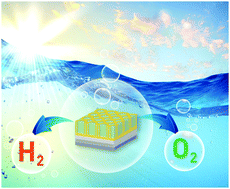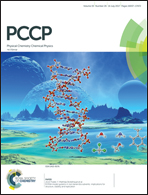Investigation of plasmon resonance in metal/dielectric nanocavities for high-efficiency photocatalytic device†
Abstract
Photocatalytic nanostructures loaded with metallic nanoparticles are being considered as a potential candidate for designing efficient water splitting devices. Here, we aim to unveil the plasmonic behavior of a device made of Au–TiO2 nanostructures through in-depth investigations combining electron energy loss spectroscopy (EELS) and cathodoluminescence (CL). The experiments confirm the existence of Au bulk plasmon excitation, intrinsic interband transitions, and plasmon losses over a wide range of energies (0.6–2.4 eV). Depending on the size and the shape of the obtained nanostructures, such as fishing hook (FH), asymmetric nanorod (AR), and a/symmetric nanoparticles, in our devices, the dephasing times and the quality factors of the modes vary. Finite difference time domain simulations were then carried out on FH and AR structures. These simulations indicate good agreement between the electric field enhancement and the obtained plasmon excitation as observed in EELS. Moreover, the plasmonic activity obtained by CL and EELS was correlated with the photocurrent measurements recorded with the device, which confirmed that the localized plasmons in Au generate hot electrons and enhance the photoresponse of the device. This study confirms the functionality of the metal dielectric photocatalyst device over a wide range of wavelengths ranging from UV to near IR.

- This article is part of the themed collection: 2017 PCCP HOT Articles


 Please wait while we load your content...
Please wait while we load your content...